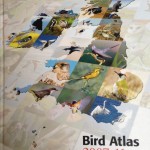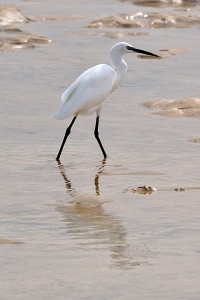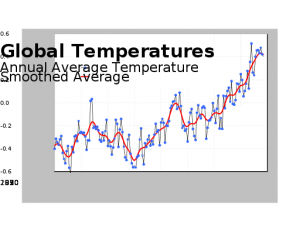 The official launch of the Bird Atlas 2007-2011 was yesterday evening at the Royal Society. The room was packed with past and current BTO staff, partners from Birdwatch Ireland and the SOC, former Atlas organisers including Tim Sharrock, Peter Lack and David Gibbons, sponsors, BTO Regional Representatives (including the excellent Northants BTO RR), the editor of Birdwatch (what an excellent magazine that is!), representatives from the statutory sector, wildlife NGOs and industry, several journos and the odd birder or two. It was a very merry throng.
The official launch of the Bird Atlas 2007-2011 was yesterday evening at the Royal Society. The room was packed with past and current BTO staff, partners from Birdwatch Ireland and the SOC, former Atlas organisers including Tim Sharrock, Peter Lack and David Gibbons, sponsors, BTO Regional Representatives (including the excellent Northants BTO RR), the editor of Birdwatch (what an excellent magazine that is!), representatives from the statutory sector, wildlife NGOs and industry, several journos and the odd birder or two. It was a very merry throng.
Andy Clements made a good speech and got a bit choked with emotion towards its end (we all liked that), Barbara Young (the BTO’s outgoing President) made a few points to the Minister Lord de Mauley and Dawn Balmer told us how easy it had been to coordinate 40,000 observers and collate and analyse 19 million records.
 The Minister made a little speech. He told us that he went to lots of events but that ‘None is more exciting than this’ (really? crikey!) and that he is ‘delighted’ to see Red Kites above his home in Oxfordshire. I was really relieved to notice that he didn’t say that this is Big Society at work (even though it is) – clearly the Government has dropped that old bit of rhetoric. Maybe the political climate has changed?
The Minister made a little speech. He told us that he went to lots of events but that ‘None is more exciting than this’ (really? crikey!) and that he is ‘delighted’ to see Red Kites above his home in Oxfordshire. I was really relieved to notice that he didn’t say that this is Big Society at work (even though it is) – clearly the Government has dropped that old bit of rhetoric. Maybe the political climate has changed?
Talking of climate change (!), I spent a couple of hours flicking through A Climatic Atlas of European Breeding Birds and compared lots of maps in there (which indicate what might happen if species can adapt to a changing climate through shifting their ranges) with the Atlas maps. It’s eye-balling rather than analysis, but it convinced me that it’s difficult to say anything definitive!

The authors of the Atlas are pretty cautious, almost ambivalent, about whether the changes in distribution revealed over the last 40 years reveal evidence of climate change shaping what we see in the countryside and I can see why. There are quite a few southern species, particularly white herons, that have spread a lot in the last 40 years but these aren’t always species that the Climatic Atlas predicts will be heading our way. You’d think that ‘southern herons arrive in UK in big numbers in times of warming climate’ would be good evidence for a climate change effect but apparently it isn’t.
Where I thought that there might be some new evidence is in shrinking distributions of northern species but where they have happened (eg Dotterel, Capercaillie) there are competing explanations, where they haven’t happened (eg Whimbrel, Greenshank) it makes you wonder why not.
Give it another 40 years of careless greenhouse gas emissions and we may be pretty sure that climate is a big factor determining bird distributions but then it might be a little late to do much about it.
The Atlas maps are like a series of images placed one on top of the other so that it is difficult to make out the true shape of things. Our birds are responding to climate change (probably) and also to intensive farming (certainly) and conservation interventions (certainly, some of them) as well as human persecution (certainly) and more occasional events such as cold winters and wet summers.
This Atlas is superb in many ways; as a social enterprise of tens of thousands of coordinated individuals; as an exercise in data storage and dissemination; as a beautiful book. It gives us, I think, many answers to ‘What?’ questions but rather few to ‘Why?’ questions (although the data on which it is based may hold some of those answers). Those most concerned with other taxa would love to know more about ‘What?’ whereas the bird-world has already answered quite a lot of ‘Why?’ questions too. The evidence for impacts of changes in farming practices on bird numbers don’t come from this Atlas but their impacts are in here although mixed up with lots of other effects. Documenting change is an important activity and that is what this Atlas does best.
 Climate change gives us a lot more ‘Why?’ questions to answer. It will be quite a challenge to work out how big a climate signal there is in these data and that is an enterprise worth pursuing. Moving away from the ‘it might be climate change, you know’ to ‘we are pretty certain that it is climate change, you know’ (or not) is a scientific quest worth making. And to do it people will have to use these Atlas data and probably similar data collected over the next 20 years too through BBS , WeBS and Birdtrack. Although a few people yesterday evening didn’t think that this would be the last Atlas I think it will be, and I think it should be.
Climate change gives us a lot more ‘Why?’ questions to answer. It will be quite a challenge to work out how big a climate signal there is in these data and that is an enterprise worth pursuing. Moving away from the ‘it might be climate change, you know’ to ‘we are pretty certain that it is climate change, you know’ (or not) is a scientific quest worth making. And to do it people will have to use these Atlas data and probably similar data collected over the next 20 years too through BBS , WeBS and Birdtrack. Although a few people yesterday evening didn’t think that this would be the last Atlas I think it will be, and I think it should be.
Ornithologists, because birds are amazing and (in some ways) easy to study, have led the way in understanding the impacts of land use change on wildlife and in developing the methods and approaches to make those studies. We, for I am a little bit an ornithologist myself, can lead the study of climate impacts on wildlife too. But I’d like us to plan those studies so that they don’t depend on an Atlas being produced in 20 years time. We need more rapid progress. The BTO will need to get out of its comfort zone, as it increasingly is in many ways, if it is to play a significant part in exploring the role of climate change on British wildlife – but that is the place to be if you aspire to be the leading bunch of ornithologists in the UK. So, they’d best get on with it.
[registration_form]
Think of all the good points I like about your blogs the best bits are the excellent summing up how you see it.My own feeling is that it is almost always a pretty accurate picture of the issue,thank you very much.
…but where is mine?? Still not arrived, this is like watching an enjoyable party through a frosted glass!!
Don’t despair – I was beginning to but mine just arrived today!
Stephen – just in time for a good read over the weekend then.